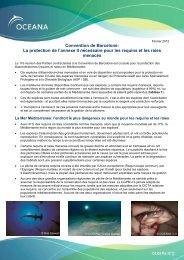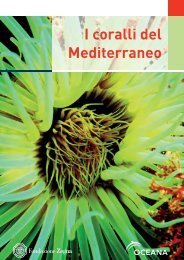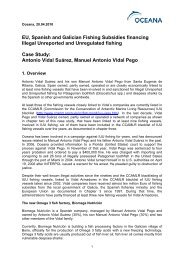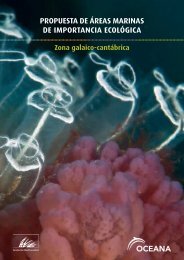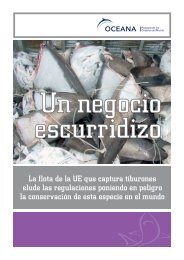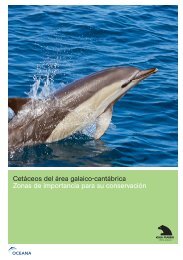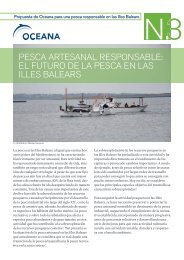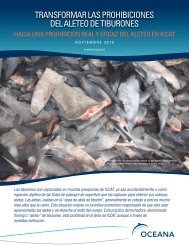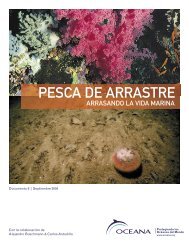Download - Oceana
Download - Oceana
Download - Oceana
You also want an ePaper? Increase the reach of your titles
YUMPU automatically turns print PDFs into web optimized ePapers that Google loves.
1. Forest of the scleractinian Dendrophyllia sp.<br />
1.1 Dendrophyllia ramea forest on infralittoral and circalittoral bottoms<br />
DESCRIPTION: Dendrophyllia ramea forests are common below -15/-20 metres in the waters of the Gulf of<br />
Cádiz. In some areas they can mix with other “coral gardens” made up of Leptogorgia and Eunicella<br />
gorgonians that are also frequently found in shallow waters -8/-10 m. up to approximately -60/-70 m.<br />
Important facies of protected species can also found in these forests, such as the orange coral (Astroides<br />
calycularis) or species that create habitats, such as sponges (Hemimycale columella, Aplysina aerophoba,<br />
etc.) and large bryozoans (Pentapora fascialis).<br />
This community can also be found on the Macaronesian area, but occupying deeper bottom areas, between -<br />
35 m and -70/-80 m. In this case the associated species are different. It is usually associated to another “coral<br />
garden” where antiphataria species predominates, especially the Antipathella wollastoni.<br />
DEPTH: 15-40 m<br />
TYPE OF SUBSTRATE: Rocky bottom, made up of slabs in many cases, with high sedimentation, between<br />
the infralittoral and circalittoral areas. In the Canary Islands waters, corals are also found on rocky bottoms, but<br />
with low sedimentation, and only in the circalittoral area.<br />
Dendrophyllia ramea forests on infralittoral and circalittoral rocky bottoms (Gulf of Cádiz, Spain)<br />
5



